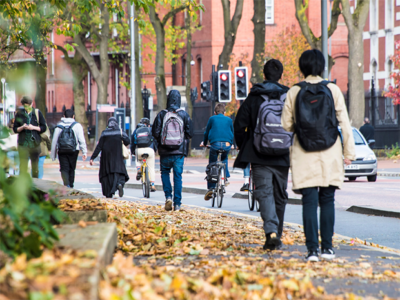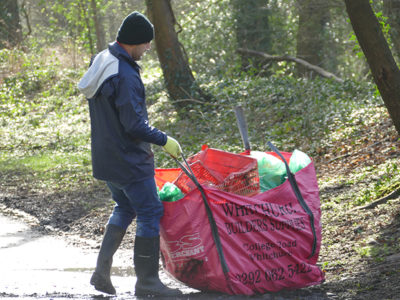“My dad always says ‘did you see the thing in the paper? We’ve cured cancer again!’”
Dr Richard Clarkson is sitting in one of the big red chairs in Cardiff University’s Hadyn Ellis Building, home of the European Stem Cell Research Institute (ESCRI). He is a senior lecturer at the university’s School of Biosciences.
New research from the ECSRI appears to have identified a gene that spreads cancer. Moreover, they seem to have found a compound that inhibits this function.
A drug that prevents the spread of cancer? Dr Clarkson was more cautious. He’s been misquoted before.
 Dr Clarkson has been working to halt the spread of breast cancer before it can spread through the body to vital organs.
Dr Clarkson has been working to halt the spread of breast cancer before it can spread through the body to vital organs.
The culprit is the B-cell Lymphoma 3 (or BCL3) gene. The first stage of Dr Clarkson’s research identified a novel function of the gene – helping cancer stem cells to migrate around the body.
“The next big step,” said Dr Clarkson, “is to think, well, are we actually going to do anything about it? Are we going to be able to stop the way that the gene works?”
“There are cancer stem cells within all tumours,” Dr Clarkson continued. “And cancer stem cells are a very small minority of cells within any given tumour that have the capability of spreading around the body, causing what we call metastasis.”
Metastasis is the process by which cancer spreads. It’s particularly dangerous when cancerous stem cells migrate to major organs.
With BCL3’s function identified, the team were able to begin the second stage of their research.
Working in collaboration with Dr Andrew Westwell and Dr Andrea Brancale of the Cardiff School of Pharmacy and Pharmaceutical Sciences, Dr Clarkson created an intricate computer model of BCL3.
The team then bombarded the BCL3 model with 360 thousand virtual chemical compounds until they found one that would naturally stick. Eventually, their work paid off.
They finally identified a compound that successfully stuck to and inhibited the BCL3, and were then able to start thinking of ways in which it could be used in therapy, perhaps as a course of injections or taken orally in tablets.
What could Dr Clarkson say about this compound?
“We have intellectual property over it,” he laughed. “All I can tell you is that it sticks very avidly to the BCL3 protein and prevents that protein interaction.”
Dr Clarkson’s reticence is understandable. Because of the high costs of bringing a drug to market (Dr Clarkson estimates it could take anything from £360 million to £1 billion to make this compound commercially available – a relatively small amount compared to some other drugs), researchers must rely on private investment to pay the bills. A patent is a very important thing in biomedicine.
The project was initially funded by Bio Vitas, a capital investment firm that specialises in biotechnology and pharmaceutical products. Bio Vitas then set up a shell group, Tiziana Pharmaceuticals, to help develop the product.
So, how long is it likely to be before this compound is available to the public?
“The first time it goes into a patient – into a person – will be in about two years time,” said Dr Clarkson.
“However, having said that, I think we have got to be very cautious about the expectation of getting this drug into trials. Statistics would say we have roughly a ten per cent chance at this stage of developing this drug and actually getting it into a patient.”
Even then, Dr Clarkson and his colleagues must demonstrate that the drug has enough impact at low doses and that it remains safe for human consumption before it can be made available to the public. There is still a lot of work to be done.
 Tests on animal models have completely inhibited metastasis and the compound has not had toxic effects – but this doesn’t absolutely guarantee it’ll behave the same way in human subjects.
Tests on animal models have completely inhibited metastasis and the compound has not had toxic effects – but this doesn’t absolutely guarantee it’ll behave the same way in human subjects.
Dr Clarkson said if fully realised, the compound could be used to halt the spread of the cancer while traditional treatments, like chemotherapy, could then be brought in to treat the existing tumours. Rather than a cure – the compound would provide a way of freezing the tumour at an early stage before it can become dangerous.
“We are extremely optimistic but, naturally, as scientists, we realise there are a number of hurdles yet to get through,” Dr Clarkson said.
“My own personal opinion is that the drug is highly effective. It’s specific, it acts specifically, it appears to have extremely low toxicity, so my own expectation is that the drug will be fine.”
He took a sip of coffee and settled back into his chair.
“However,” he added with a smile, putting down his coffee cup. “I am very often wrong.”




